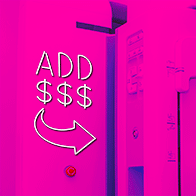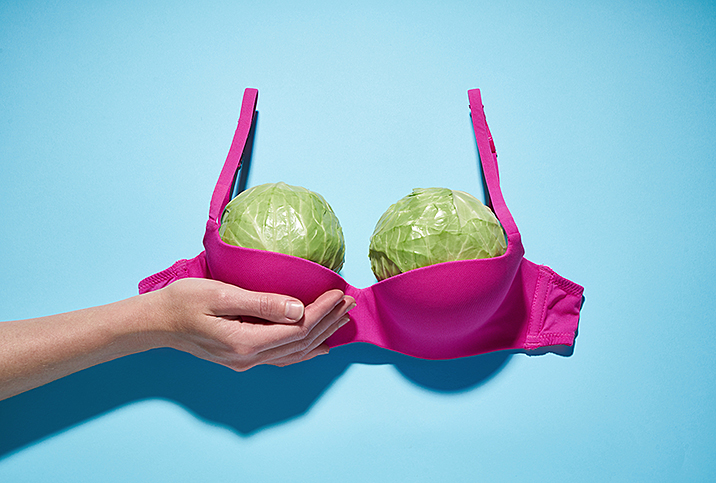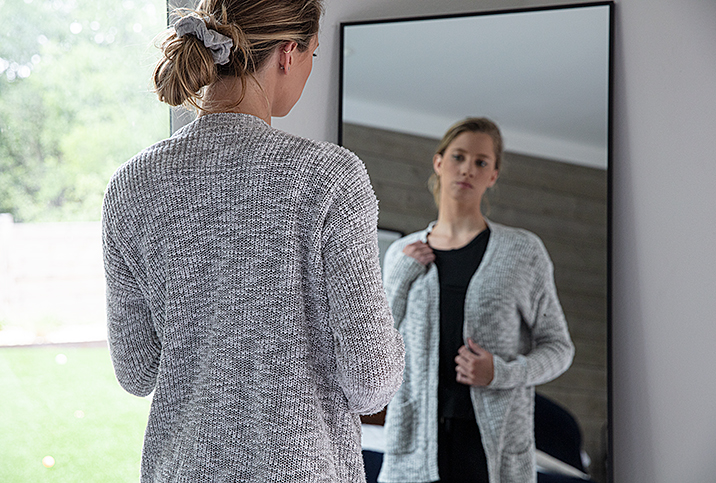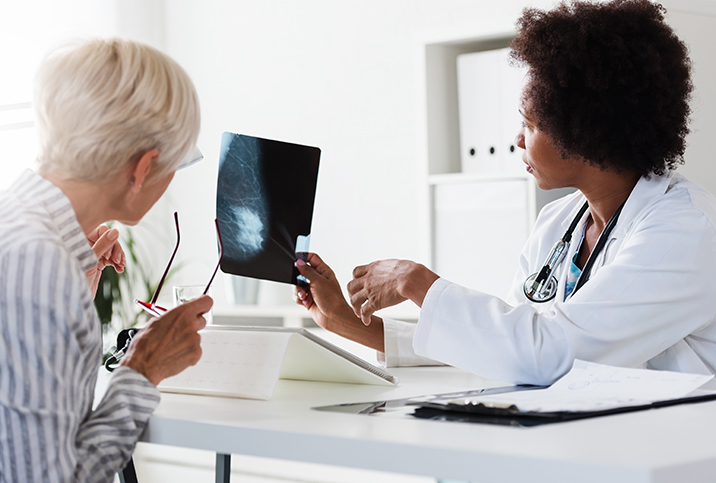Millennials Are Turning 40 and Getting Their First Mammograms

If you're nearing 40 and aren't at an increased risk of developing breast cancer, you might have had a conversation with your provider about getting your first mammogram. Maybe you're even confused because your mom had her first mammogram at 50. What gives?
We got the scoop from experts about current guidelines, the mammogram process and how to make it as painless as possible.
What's up with the confusing recommendations?
"There are a number of different guidelines, depending on which source you read," explained Diana Lam, a radiation oncologist at Seattle Cancer Care Alliance and associate program director at UW School of Medicine. The guidelines are based on the same data, it's just interpreting that data and weighing the risks and benefits that differ.
For example, the most updated guidelines from the U.S. Preventive Services Task Force state women should get their first mammogram at age 50, and every two years thereafter. The American Cancer Society recommends age 45 is the sweet spot to start annual mammograms.
But other organizations, including the American Medical Association, recommend starting mammograms at age 40 with yearly screening.
Starting mammograms earlier saves the most lives.
One of the risks of a mammogram is a false positive—something concerning showing up on your mammogram, going through a battery of additional tests and anxiety, all to conclude there's no cancer. It's not realistic to test every woman since that only increases the chances of false positives and anxiety. This is why some organizations recommend mammograms at 45 or 50 years old.
However, Lam recommends starting at age 40, with annual screening thereafter, even with the chance of those false positives and the anxiety they can cause. Starting mammograms earlier saves the most lives, she explained.
How you can prepare for your first mammogram
Before your appointment, there are a few things you can do to make the process as smooth and comfortable as possible.
- Consider wearing pants or a skirt instead of a dress so you can be covered on the bottom. Wear clothing that's easily accessible to just take off your top.
- Deodorants can interfere with the mammogram reading, as the particles can show up as little white dots, according to Kecia Gaither, M.D., MPH, FACOG, who is double board-certified in OB-GYN and Maternal-Fetal Medicine. The concern is breast calcifications also show up as little white dots. So it's best to skip deodorant until after your appointment is over.
- There could be some discomfort, explained Gaither, so you can take a pain reliever such as Aleve or Motrin before your procedure if approved by your provider.
- Understand the person performing the exam will need to touch your breasts, to lift them onto the flat surface to take the image.
- Be ready to advocate for yourself. If the compression is causing pain, let the tech know.
- Your breasts can be extra-sensitive around your period, so try to schedule your appointment outside of that window.
The mammogram process step-by-step
"We know everyone is really nervous, particularly for their first one," said Lam, "because they've probably heard horror stories about how much it hurts." For many women, it can help to know exactly what to expect for your first mammogram.
Fear can keep some people from coming back year after year, which is what the medical community wants to avoid. While each facility might do things a little differently, here's a general idea of what the process is like, beginning to end.
You'll meet with the tech who will be doing your exam, and they'll ask you questions about your medical and family history. You'll change into a robe or gown with the front open. Once you actually walk into the room, explained Lam, the entire procedure should only take about 10 to 15 minutes.
The mammography machine has two plastic paddles. "Unfortunately, the breast does need to be compressed, for several reasons," Lam said. Breast tissue needs to be spread out in order for the provider to see it better. "We're also looking for things that are really small, like a couple of millimeters or less."
The good news is breast tomosynthesis—aka a 3D mammogram—has largely replaced the traditional 2D mammogram, and has better views of the breast. This allows for the likelihood of any cancer to be detected and fewer chances of needing additional testing.
One at a time, each breast will be compressed, Gaither explained, and images will be taken from different angles in order to view all the breast tissue. It takes about 10 to 15 seconds of compression for each breast. Afterward, you'll be allowed to dress and your provider will notify you of the results.
The bottom line
Getting your first mammogram can cause some anxiety because you might worry they'll find something concerning. However, the American Cancer Society states on their site "that only 2 to 4 screening mammograms in 1,000 lead to a diagnosis of breast cancer."
Organizations vary on guidelines for performing breast self-exams, but if your doctor recommends them, examining yourself regularly can help you know what your breasts feel like and what's normal for you. If you have any concerns about your breasts or any changes you're experiencing, don't hesitate to talk with your provider.




















